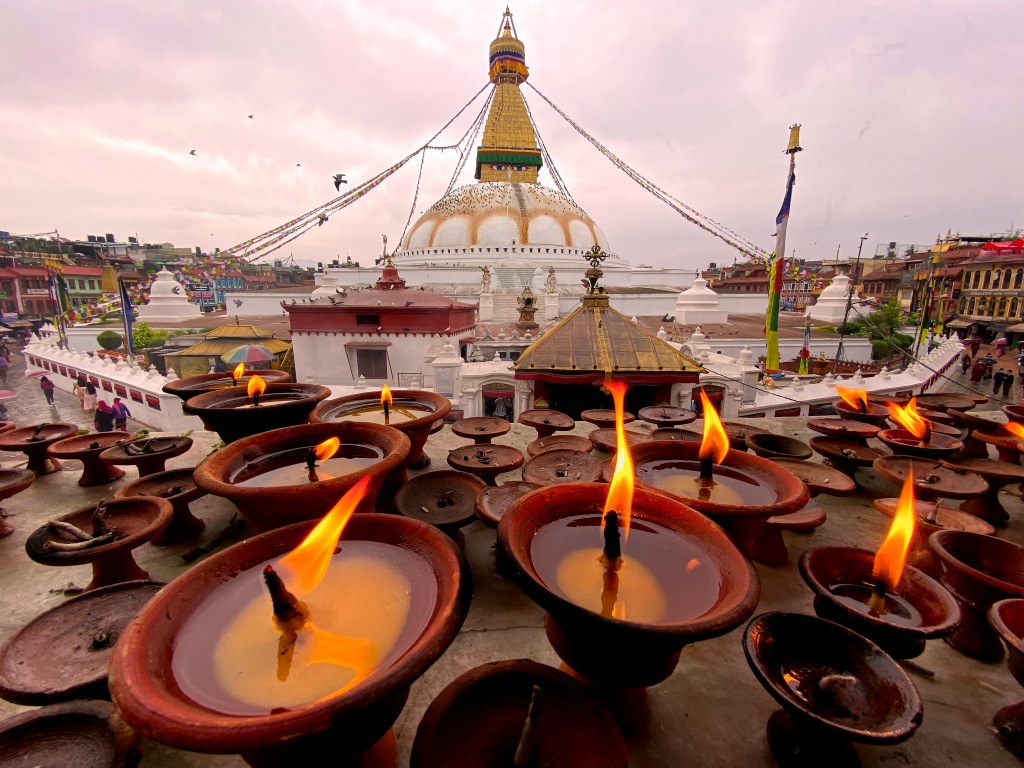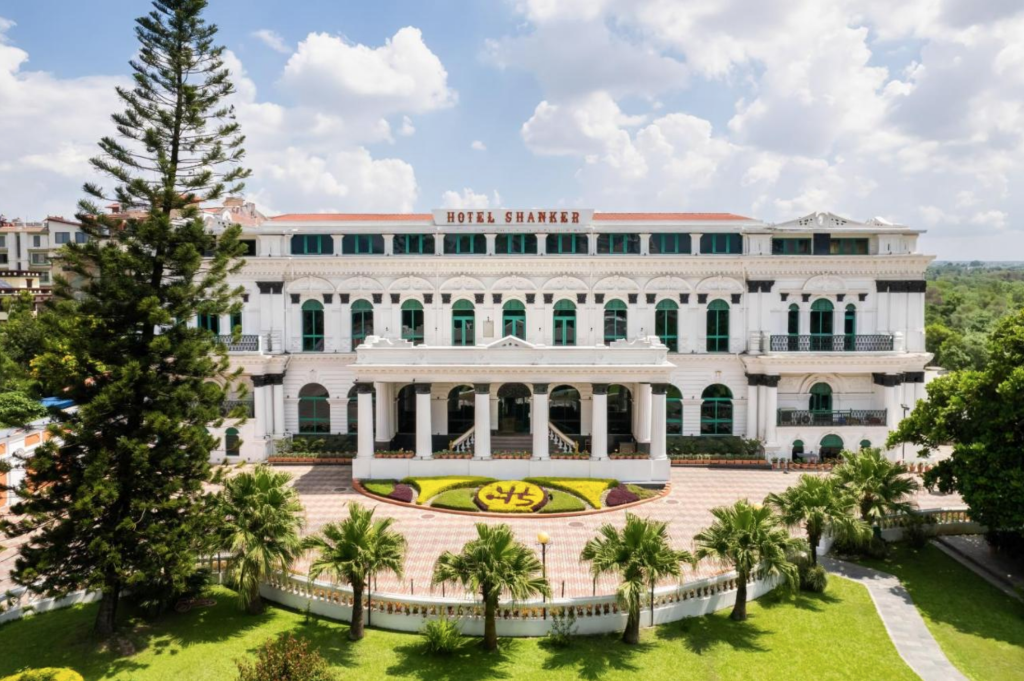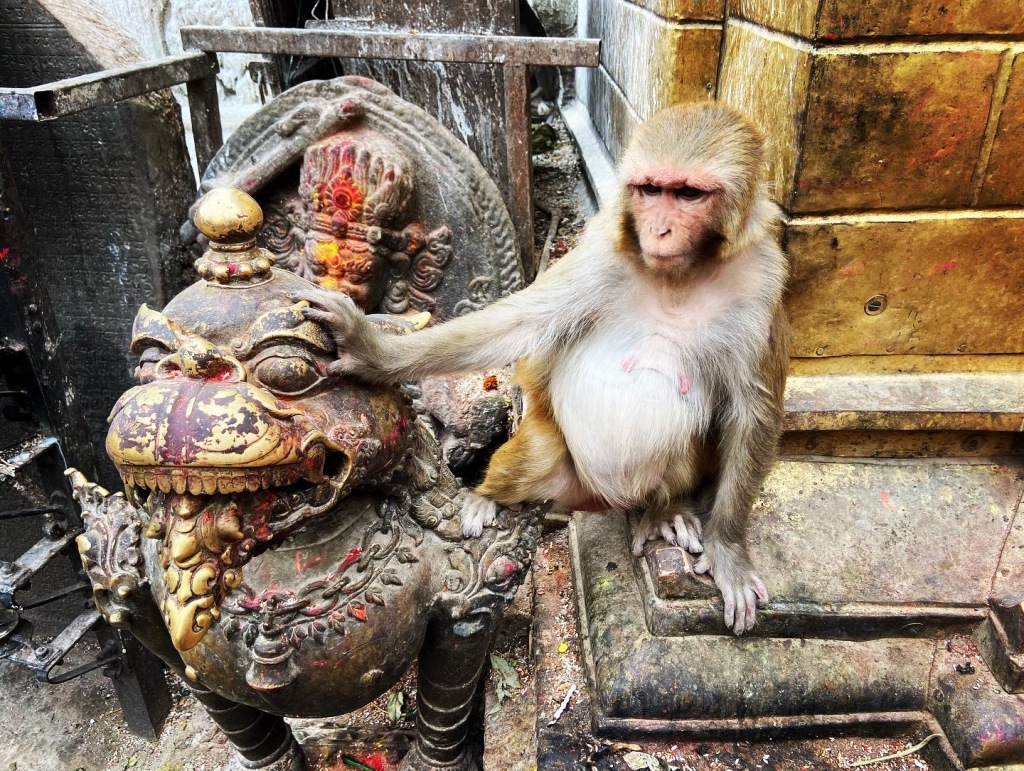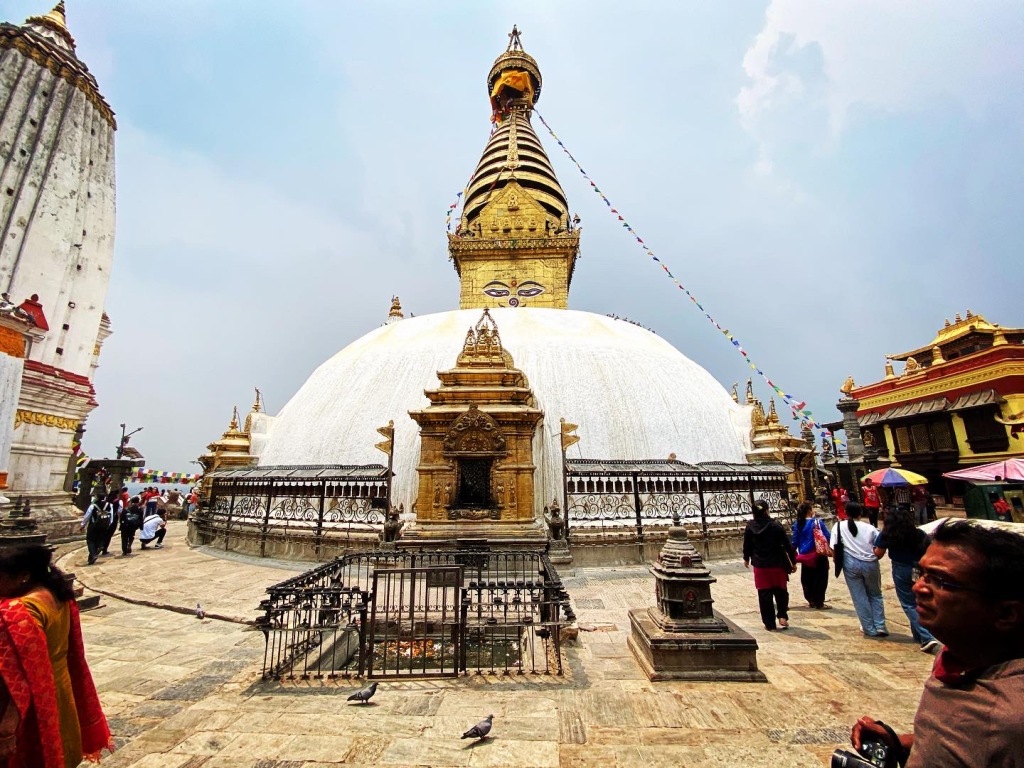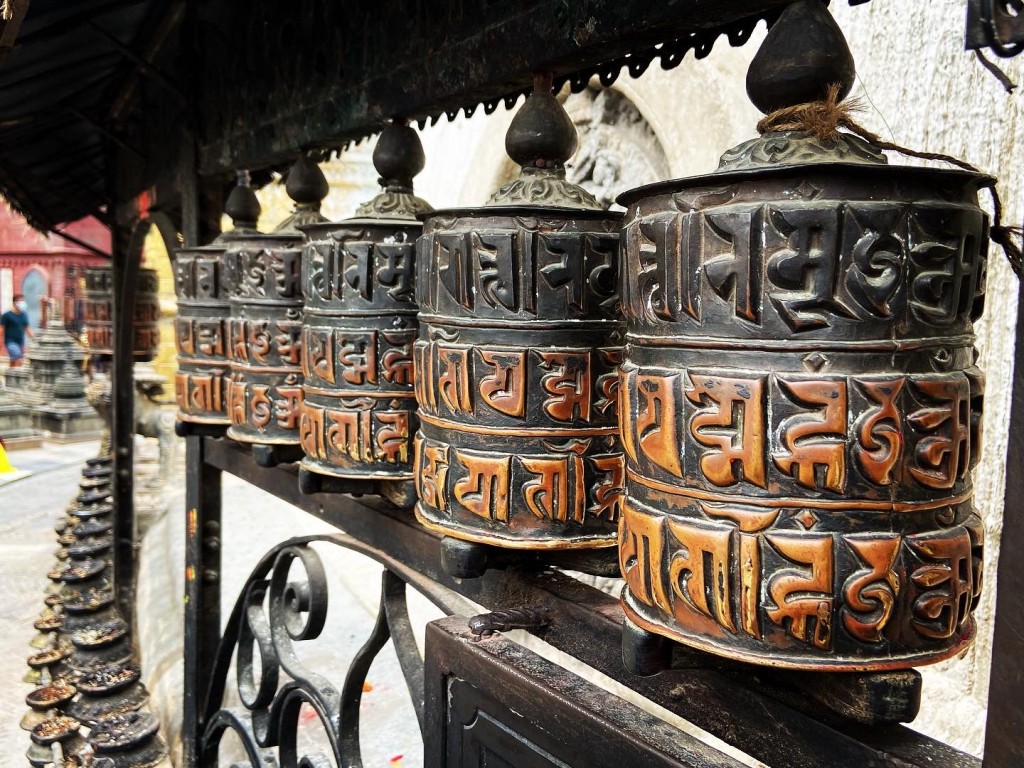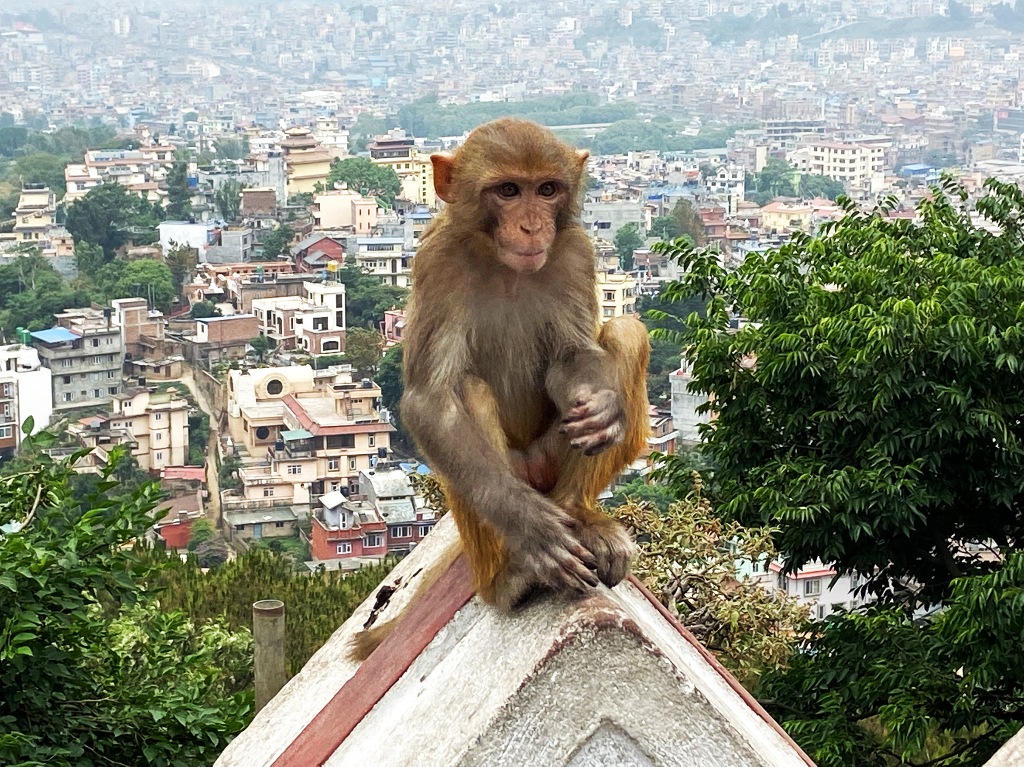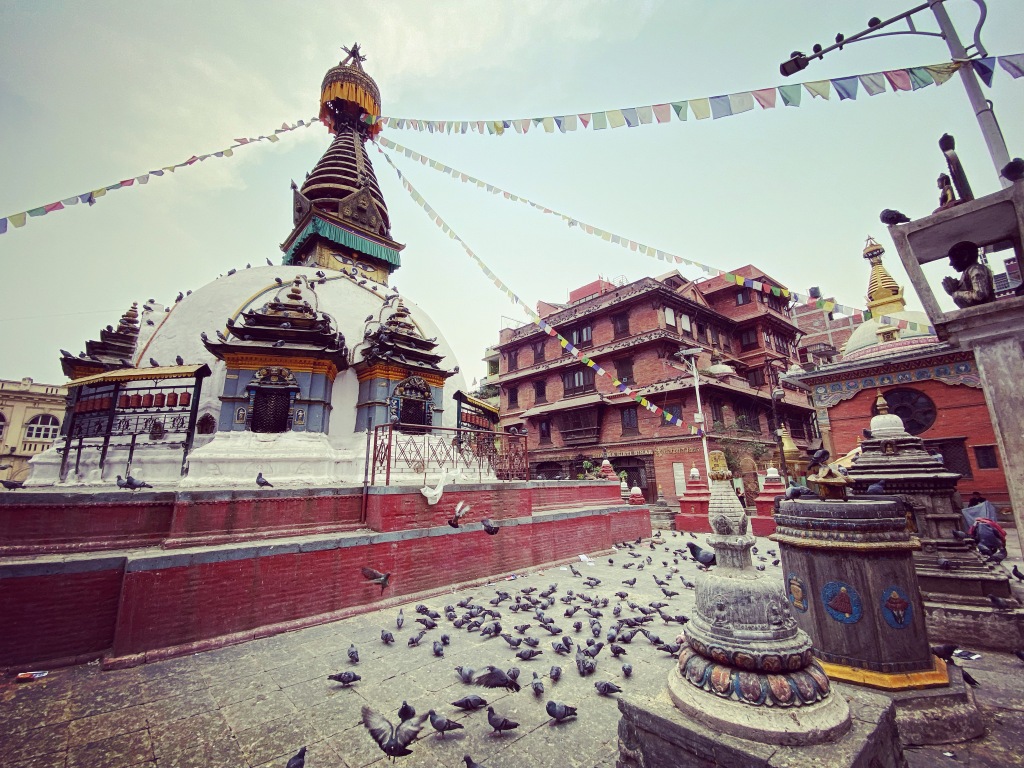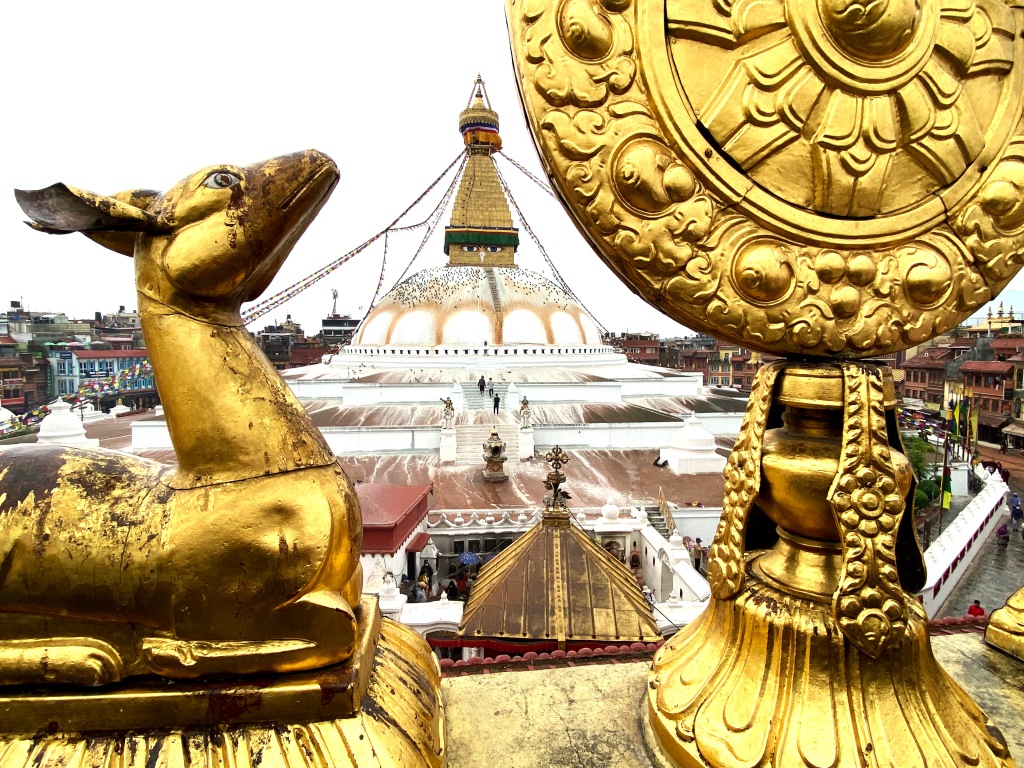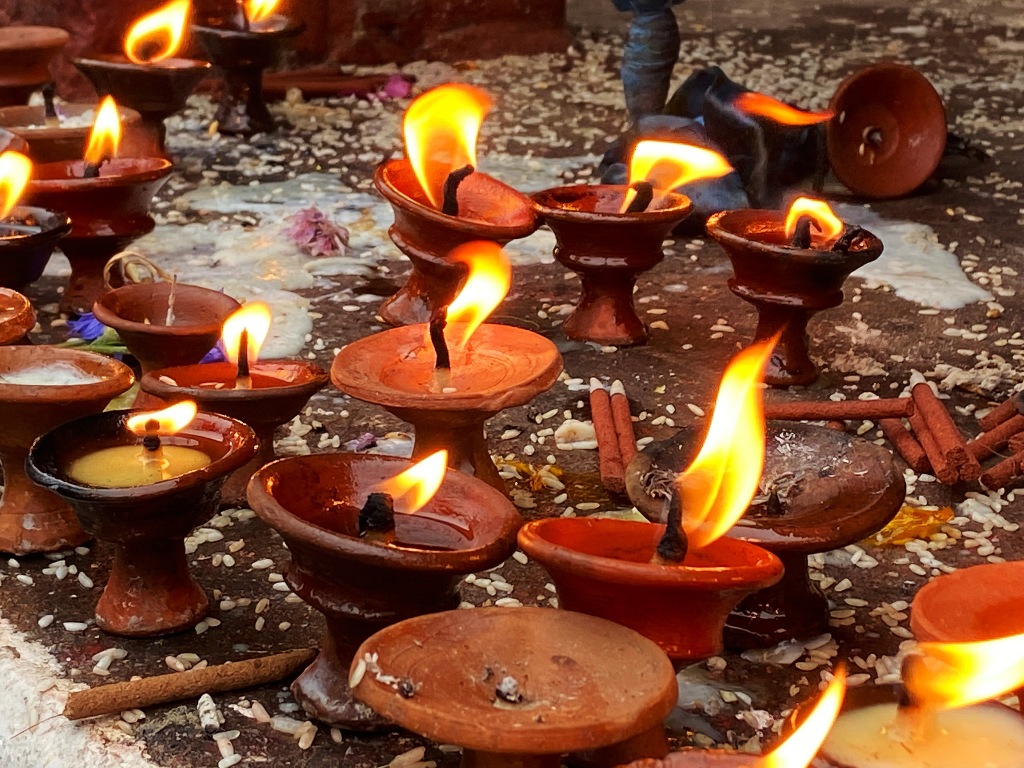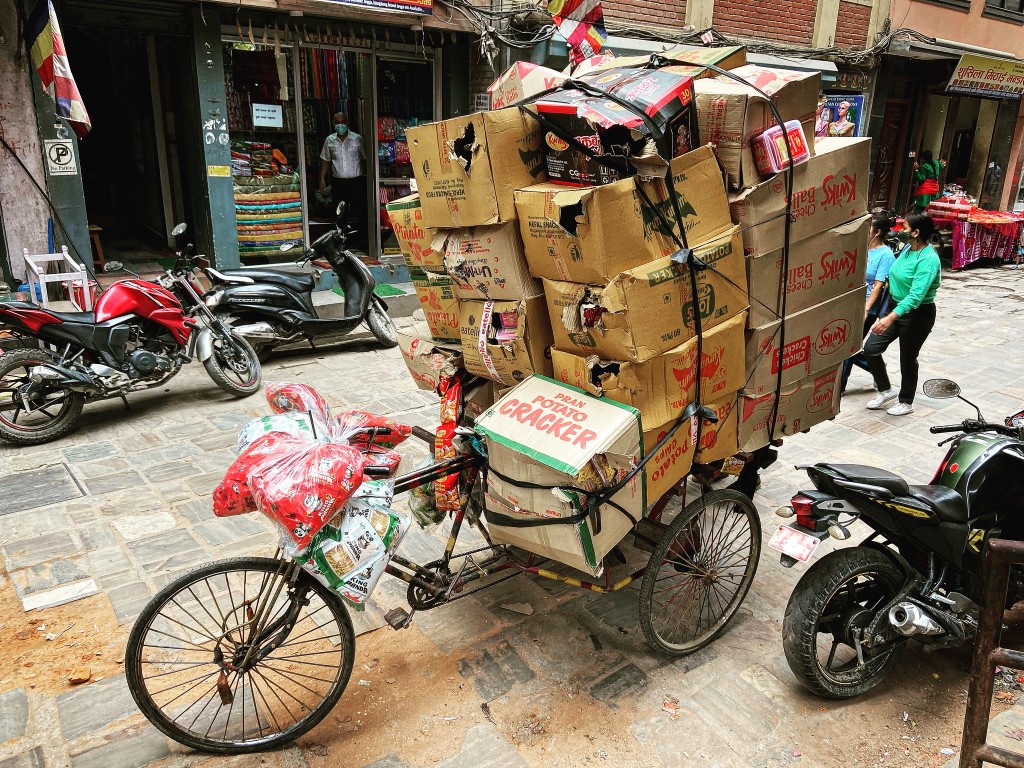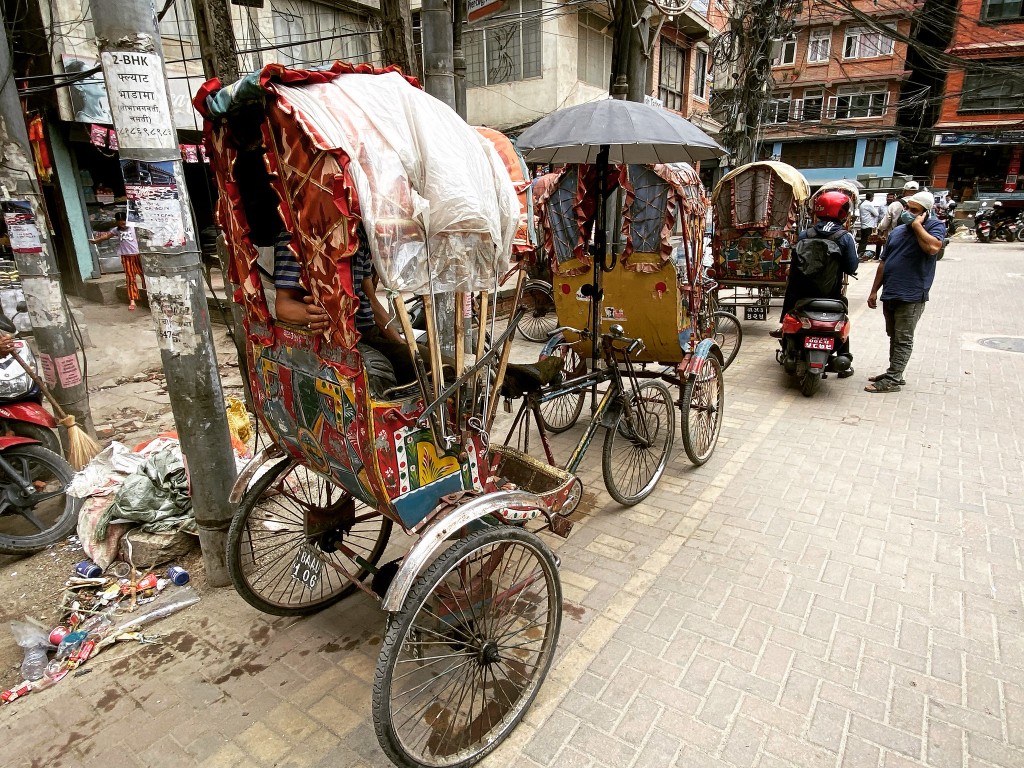After the exhausting expedition to Mera Peak was over it was time to kick off the battered hiking boots and explore for a few days in the amazing, vibrant and bustling city of Kathmandu.
Kathmandu had been on my radar for as long as I could remember. I’d read about it in various adventure books and seen it in countless films and photos over the years. As a result it had attained an almost mythical quality for me and I was extremely excited to finally be there for a few days ready and able to explore.
I stayed in the very respectable Hotel Shanker a heritage hotel housed in a 19th-century palace within walking distance of the popular haunts of Thamel and Durbar Marg, Kathmandu’s main tourist hubs.
From the faded grandeur of the hotel it was a short if perilous hop through Kathmandu’s notorious traffic to Thamel the main area in town where backpackers, expedition teams and tourists in general congregate.
I walked around the warren of shops and tatty stalls where I bought a couple of dirt cheap climbing books and a prayer bowl having haggled it down in price (or so I believe).
But we would have to risk our lives further in a rickety taxi across town to visit the big sites that we all really wanted to see in the following days.
Our first stop was Swayambhunath Temple which is an ancient religious complex atop a hill in the Kathmandu Valley, west of Kathmandu city. The Tibetan name for the site means ‘Sublime Trees’, named after the many varieties of trees to be found on the hill. But it is maybe better known as The Monkey Temple due to the troops of notorious monkeys living and roaming on and around the hill.
Believed to date back to 460 A.D., it was built by King Manadeva in the 13th century and it has become an important center of Buddhism over the years.
We braved the crazy traffic filled roads in a white knuckle taxi ride across town being deposited at the foot of the famed 365 steps which lead up to the stupa. We climbed slowly in the stifling city heat to eventually reach the stupa.
It was predictably crowded at the top and overflowing with the aforementioned monkeys and tourists. But the views from the hilltop were worth the struggle with amazing vistas out across the city and valley beyond.
After spending an hour or so at Swayambhunath we headed back down and back across Kathmandu towards Durbar Square.
Basantapur Durbar Kshetra is one of the three Durbar (royal palace) Squares in the Kathmandu Valley that are UNESCO World Heritage Sites. Construction of the square began many eons ago in the 3rd century but the major structures seen today were added across later periods.
On 25 April 2015, an earthquake with an estimated magnitude of 7.9 (Mw) hit the region and severely damaged the Square, reducing several buildings to a mass of rubble. Many of these buildings were still in various states of disrepair or rubble when I visited in spring 2022.
Even with a modern maze of bamboo scaffolding surrounding the vast majority of the structures in the Square it was easy enough to see that in its full glory it would have been a place of great reverence and architectural splendour.
We wandered around the unfortunate building site stepping over broken bricks, around fences and across tumbled down stone. An eclectic mix of people and animals heaved and throbbed around the structures creating the stereotypical chaos associated with so many asian cities in the third world.
Exhausted and hot we retreated to a bar for some sustenance before heading back via Charumati Stupa (often called “Little Boudhanath”) to our hotel and the decadence of the hotel pool.
Later that evening fully refreshed I visited The Garden of Dreams, a neo-classical garden in Kaiser Mahal Kathmandu, which was built in 1920.
The area consists of 6,895 square metres of gardens with three pavilions, an amphitheater, ponds, pergolas, and urns. The Garden, which featured a design inspired heavily by the Edwardian style of formal garden design, was considered to be one of the most sophisticated private gardens of its time when completed.
It felt as if I had crossed back into Europe for a while as I wandered around the green, sweet and familiar smelling garden grounds.
Next morning the sky was overcast as we took another hair raising taxi ride through the crowded streets to the Boudhanath Stupa.
Perhaps the most visited site in Kathmandu Boudhanath, also known as Bouddha, Khasti Chaitya and Khāsa Chaitya is a giant stupa. Located about 11 km from the center in the northeastern outskirts of Kathmandu, its massive mandala makes it one of the largest spherical stupas in the world that can reputedly be seen feven rom space it’s that vast.
The stupa itself is said to entomb the remains of Kassapa Buddha and is located on the ancient trade route from Tibet which enters the Kathmandu Valley by the village of Sankhu in the northeast corner of town and continues on to the ancient and smaller stupa of Chabahil known as the Charumati Stupa which I mentioned we visited the previous day.
Tibetan merchants have rested and offered prayers at Boudha Stupa for many centuries. Prayer flags can be seen draped all over the stupa and are the supposed carriers of mantras and prayers. When the wind flutters the flags are believed to spread prayers and positive vibes.
The base of the stupa tower is decorated with pairs of eyes on each of the cardinal directions representing the all-knowing nature of the Buddha. Beware you are being watched!
As a daily ritual, many people circumambulate clockwise as is tradition three or more times around the stupa while repeating the Buddhist mantra ‘Om Mani Padme Hum’ in a “kora”.
Surrounding the Stupa are many small streets and narrow alleys lined with colourful homes, Tibetan Buddhist monasteries and various street vendors. There are a number of good and not so good restaurants, coffee shops, cafes, guest houses, Tibetan art and craft shops etc in this same area.
In my humble opinion the Stupa is a must see destination when in Kathmandu, it is a unique, very big and incredibly vibrant place to visit.
After spending the morning soaking in the unique atmosphere of the stupa we hit the streets heading back to the hotel and the almost equally spiritual hotel bar for (once again) some much needed liquid refreshment.
That evening back in Thamel when eating out I bumped into the now world famous Nepalese mountaineer Nirmal Purja known to many just as Nims. He was very polite and generous with his time letting us all take our ubiquitous selfie photos with him without a murmur of discontent for disrupting his evening, top man!
And so sadly after three days my short time in Kathmandu ended. I could probably have spent another day in the city with many more historical and religious sites to see but the time was right to leave and head back to England.
I had been away for twenty eight days on the longest expedition I’d been on so far. I’d lost over a stone in weight, grown an old man grey beard and missed my family and pets tremendously.
But I’d also gained memories to last a lifetime!
A brief list of places I visited and where I stayed while in Kathmandu with the approximate prices correct at time of publishing:
Hotel Shanker – https://www.shankerhotel.com.np/#hotel-in-kathmandu-nepal
Swayambhunath Temple – NPR 200.00 – P77R+X52, BHAGANPAU 44600, Nepal
Kathmandu Durbar Square – NPR 1000.00 – Kathmandu 44600, Nepal
Garden of Dreams – NPR 400.00 – Tridevi Sadak, Kathmandu 44600, Nepal
Boudhanath Stupa – NPR 400.00 – Kathmandu 44600, Nepal
Taxi Prices are all very negotiable, haggle, be brave and never accept the first price!


